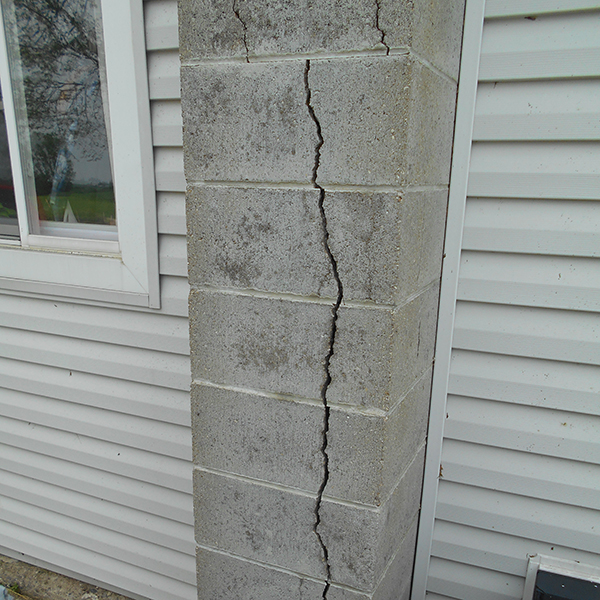Maintaining Your Chimney and Fireplace
If you use a fireplace with any regularity during the cold season, it’s in your best interests to provide the necessary chimney & fireplace maintenance and usage practices that will help avoid serious damage and safety risks to your home & family.
Here are six tips for getting the most out of your fireplace/chimney system.
 Keep your eyes open for signs of a chimney leak
Keep your eyes open for signs of a chimney leak
Leaky chimneys, if ignored, can lead to expensive repair projects. Water and chimneys don’t mix well, so watch for these leak signs:
- Water in the firebox
- Damp sections of walls and the ceiling near the fireplace or chimney
- Musty odors coming from the fireplace or in the attic or crawl spaces of the home.
- Efflorescence (white staining) on the exterior masonry, which means bricks have been absorbing moisture and need repair.
- A squeaky, hard-to-operate damper (could be a sign of rust)
If you encounter any of these signs, have a licensed chimney technician take a look.
Burn dry wood only
Dry or seasoned wood not only burns more efficiently and more thoroughly, but it also burns with much less smoke than wood that hasn’t had sufficient time to dry out. Excess smoke means excess creosote (see below).
A good rule of thumb is to allow freshly cut logs six months to dry. Dry logs will have a brittle appearance, bark will chip off easily and when whacked together, they’ll make a sharp clacking sound as opposed to a dull thud.
Use only actual firewood in your fireplace
“Firewood” does not include other types of wood such as furniture pieces and wall boards. It also doesn’t include clothing, pillows, cardboard, plastic containers, metals or general household garbage.
Inappropriate items can flare up and burn far too hot, causing damage to your fireplace. Many non-approved items also create huge amounts of smoke.
Have your chimney professionally cleaned
Annual chimney sweeping will remove built-up creosote and dramatically reduce the chance of a chimney fire. Creosote, which is a tar-like substance that forms when smoke condenses in the flue, can be sticky, flakey, puffy or solid and is always highly flammable.
Licensed chimney companies have the industry-grade tools and training to safely remove creosote from your chimney. If you use your fireplace more than once or twice per season, you should have it professionally cleaned once a year, as per recommendations from the Chimney Safety Institute of America (CSIA) and all other fire-safety agencies.
Schedule annual chimney and fireplace inspections
Along with cleaning, your chimney should be inspected annually along with your fireplace. You can perform visual inspections periodically and spot signs of obvious damage or malfunction, but only an experienced chimney inspector will be able to go deeper into the system and see what you can’t.
 Communicate with your chimney professional
Communicate with your chimney professional
As the winter season progresses, it’s important that you stay aware of issues with your fireplace and chimney and report them to your chimney repair company. Things to watch for:
- Known or suspected chimney fires
- Black soot stains are seen around the top area of the exterior of the chimney
- Fireplace sending smoke into the house instead of up the chimney
- Sounds of wildlife (birds, squirrels, etc.) or nesting material inside your chimney
- Chunks of chimney creosote or other flammable material in the firebox
- Cracks in exterior chimney bricks; you’re seeing crumbling masonry on your roof or firebox.
- Signs of a leaky chimney as previously outlined
Above & Beyond Chimney Service of Dedham, MA, provides the help you need to keep your chimney and fireplace running safely and properly. Call us for chimney inspections, chimney cleaning and all types of chimney repair, rebuilding and restoration work.
We serve the entire South Boston and South Shore regions of Massachusetts. Speak with an expert about your chimney today at (781) 383-0415.
